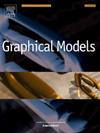通过伪回放生成的场景理解领域增量学习范式
IF 2.2
4区 计算机科学
Q2 COMPUTER SCIENCE, SOFTWARE ENGINEERING
引用次数: 0
摘要
场景理解是一项计算机视觉任务,涉及捕捉物体的像素级分布。与大多数专注于单场景模型的研究不同,我们考虑了一个更通用的建议:用于场景理解的领域增量学习。这使我们能够将经过充分研究的单场景模型适应为多场景模型,减少数据需求并确保模型灵活性。然而,利用场景域之间的相关性的领域增量学习尚未被探索。为了应对这一挑战,我们提出了一种用于场景理解的领域增量学习范式(D-ILP),以及一种不需要手动标记的伪回放生成(PRG)新策略。具体来说,D-ILP利用预训练的单场景模型和增量图像进行监督训练,从其他场景中获取新知识。作为一种预训练生成模型,PRG可以从增量图像和文本提示中可控地生成类似源图像的伪重播。这些伪回放被用来最小化原始场景中的灾难性遗忘。我们使用三个可公开访问的模型进行实验:Mask2Former, Segformer和DeepLabv3+。通过将这些单场景模型成功地转化为多场景模型,我们可以同时获得高质量的原始场景和新场景解析结果。同时,通过对D-ILP的分析,验证了该方法的有效性和合理性。本文章由计算机程序翻译,如有差异,请以英文原文为准。
Domain-Incremental Learning Paradigm for scene understanding via Pseudo-Replay Generation
Scene understanding is a computer vision task that involves grasping the pixel-level distribution of objects. Unlike most research focuses on single-scene models, we consider a more versatile proposal: domain-incremental learning for scene understanding. This allows us to adapt well-studied single-scene models into multi-scene models, reducing data requirements and ensuring model flexibility. However, domain-incremental learning that leverages correlations between scene domains has yet to be explored. To address this challenge, we propose a Domain-Incremental Learning Paradigm (D-ILP) for scene understanding, along with a new strategy of Pseudo-Replay Generation (PRG) that does not require manual labeling. Specifically, D-ILP leverages pre-trained single-scene models and incremental images for supervised training to acquire new knowledge from other scenes. As a pre-trained generation model, PRG can controllably generate pseudo-replays resembling source images from incremental images and text prompts. These pseudo-replays are utilized to minimize catastrophic forgetting in the original scene. We perform experiments with three publicly accessible models: Mask2Former, Segformer, and DeepLabv3+. With successfully transforming these single-scene models into multi-scene models, we achieve high-quality parsing results for original and new scenes simultaneously. Meanwhile, the validity and rationality of our method are proved by the analysis of D-ILP.
求助全文
通过发布文献求助,成功后即可免费获取论文全文。
去求助
来源期刊

Graphical Models
工程技术-计算机:软件工程
CiteScore
3.60
自引率
5.90%
发文量
15
审稿时长
47 days
期刊介绍:
Graphical Models is recognized internationally as a highly rated, top tier journal and is focused on the creation, geometric processing, animation, and visualization of graphical models and on their applications in engineering, science, culture, and entertainment. GMOD provides its readers with thoroughly reviewed and carefully selected papers that disseminate exciting innovations, that teach rigorous theoretical foundations, that propose robust and efficient solutions, or that describe ambitious systems or applications in a variety of topics.
We invite papers in five categories: research (contributions of novel theoretical or practical approaches or solutions), survey (opinionated views of the state-of-the-art and challenges in a specific topic), system (the architecture and implementation details of an innovative architecture for a complete system that supports model/animation design, acquisition, analysis, visualization?), application (description of a novel application of know techniques and evaluation of its impact), or lecture (an elegant and inspiring perspective on previously published results that clarifies them and teaches them in a new way).
GMOD offers its authors an accelerated review, feedback from experts in the field, immediate online publication of accepted papers, no restriction on color and length (when justified by the content) in the online version, and a broad promotion of published papers. A prestigious group of editors selected from among the premier international researchers in their fields oversees the review process.
 求助内容:
求助内容: 应助结果提醒方式:
应助结果提醒方式:


